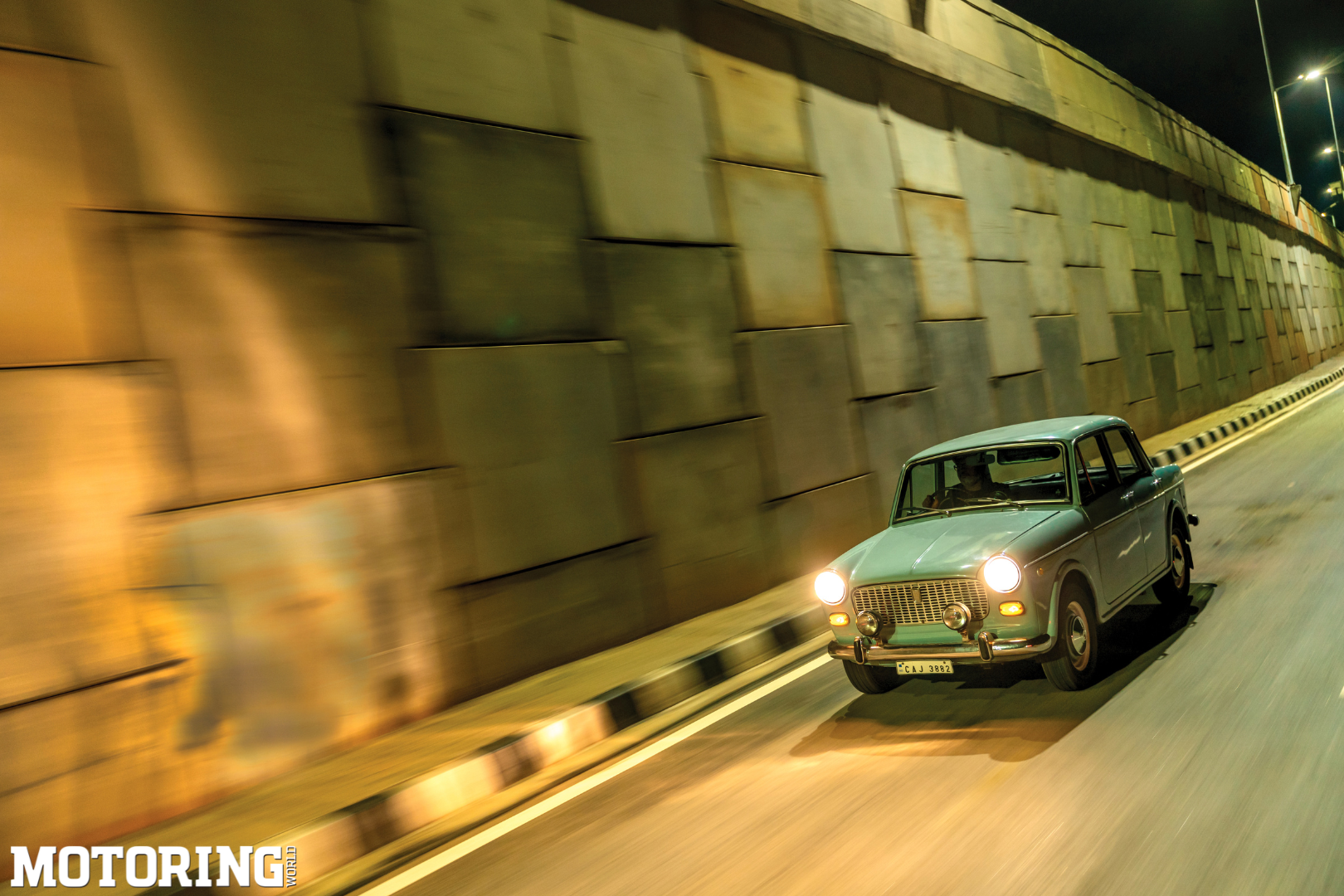Imagine this. An elderly car hopped up on an engine transplant being redlined through the first four gears, well into triple-digit speeds — and the prop shaft decides it’s had enough, enters the cabin by breaking through the floor, and impales the seat to culminate its protest. And all this while, the car becomes a runaway pendulum, and only luck ensures that it comes to rest on the road’s left shoulder without any harm done to itself or its occupants. That’s exactly what happened to this car a couple of years ago, and instead of turning into a cautionary tale, I was intrigued by it. That was because only moments before the cataclysmic failure, it had comfortably outgunned a brand-new Kia Seltos that did its best to chase the old car. Now you get why this is no normal Premier Padmini/Fiat 1100 D, right?
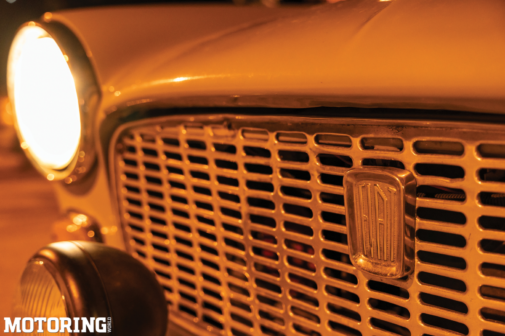
This transformation is roughly equivalent to your grandmother becoming a cage fighter, and it comes from the mind of my friend, Karan Lokhande, who’s usually found running Motomatic R&D in Bangalore where he restores old motorcycles and scooters. The Fiat is the first car he ever bought, shortly after I first met him. Intended as a normal restoration job to make the car a daily driver, I suppose it wasn’t long before visions of an engine transplant began to haunt Karan’s restless mind. And with the help of some well-meaning friends, he got his hands on a recently rebuilt rallyspec 1.6-litre engine from the old Maruti Suzuki Baleno. With friends like these…
Anyway, in its current state of tune, the engine makes around 105 bhp. Now that might not sound like much according to modern standards — but it is more than double the number of horses originally found under that age-old hood! That kind of enhancement in a design that traces its origins to the 1960s caused many moments that mixed silent nervous contemplation with sudden urges to run away from the car altogether. As for the rest of the drivetrain, it runs a 5-speed gearbox from the Gypsy King and a stock rear differential. And after that first disaster, the stock propeller shaft was replaced with a modified one from an Innova, which is much stronger. It is a cautious theory mixed with abundant hope.
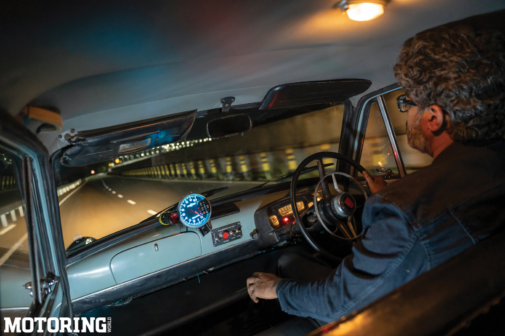
‘So much money spent, and we’re going at the same speed we would in a normal Fiat,’ said Karan, as I cruised along on a dark highway, trying to get used to the car’s controls. As Karan has kept repeating for years, there was some steering in the play. It had no identifiable centre, just a vague zone in which it played Chinese whispers with the front wheels in totally different languages. The bench was springy, harking back to the era when seats had a big role in ride quality. And there were no seat belts, only the big steering wheel that was once famous for impaling its wielders in the event of a head-on collision. Between the threatening steering column at the front and an alarming prop shaft at the back, I could imagine what being on a spit roast might be like.
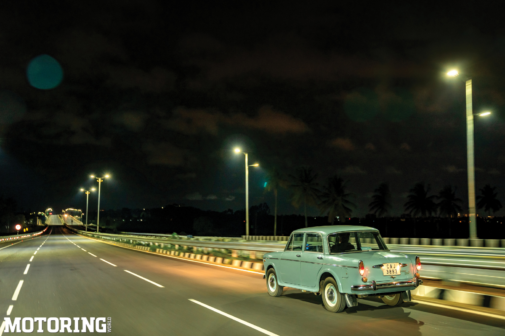
‘By next year, it’ll be exactly as I want it to be,’ said Karan, in a moment of shining but misguided optimism. ‘That’s what you’ll say every year,’ I replied, before we both burst into laughter rooted firmly in reality. There was no handling to speak of, as I discovered while going straight over rumble strips, only to fishtail at the end. And the suspension and brakes were stock, which added liberally to my burgeoning caution. Then again, this car was all about its heart. And it moved me like nothing else. At first, the Gypsy gearbox’s ratios felt too short, but the Baleno engine’s rpm-producing abilities meant that it could stretch its legs like no other Fiat. The floor-mounted gear lever was easy enough to control, though each of the pedals were mounted at different heights, which made footwork quite difficult for my oversized feet. But greed always gets the better of comfort, no?
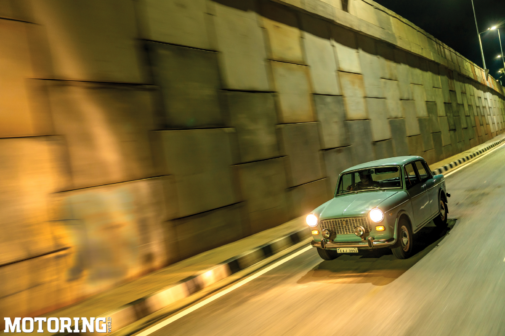
By the time I first floored it, the cabin smelled like old internal combustion, a loud roar erupting from the exhaust which was under the left-front door. The sensation of speed was somehow simultaneously deceptive and exaggerated. For example, in fifth gear at a reasonable rpm, it rolled along at 80 kph with no great effort. And yet the cabin was filled with so much wind and noise, it felt like I was breaking some land-speed record or another. When I finally gave it the stick, things turned violently surreal. Everything became noise and fury, with each upshift openly challenging my fight-or-flight response, until about 100 kph when the whole floor started vibrating in a manner that lifted my foot off the throttle. Yes, that prop shaft was a stronger one, but I was compelled to repeatedly remind myself that the floor was not.
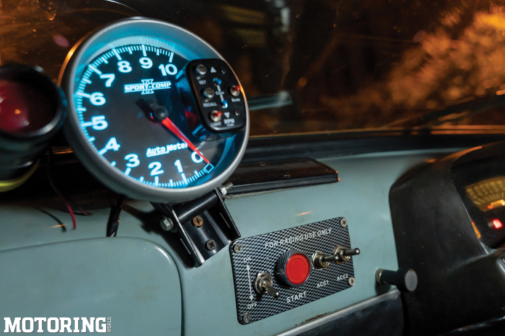
And so, I had to be happy indulging in booming bursts of acceleration in the first three gears, which the car was perfectly happy to oblige me with. For the shoot, Karan sat in the other car and then proceeded to call me every 15 minutes to confirm if ‘the fan was on’, referring to the manual switch for the radiator fan. No thermostat yet, you see. And no speedometer, since the Gypsy King gearbox doesn’t get along with the stock Padmini meter. And that big rev counter on the dashboard, which looked decidedly out of place in the quaint interior, isn’t connected to anything yet. As with any self-respecting project, there is unfinished business and a list of upcoming mods, too: disc brakes at the front and coil springs to replace the leaf springs at the back, to begin with. According to Karan, ‘To actually go as fast as it can, I’d like a roll cage and anti-roll bars, along with better suspension. Let’s see how it goes.’ There goes the one-year plan, then.
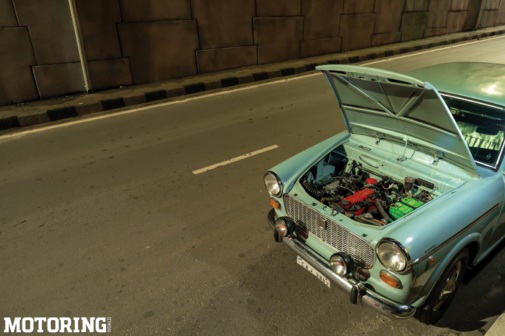
On a few occasions, other cars on the highway finally caught up and drove alongside, their occupants no doubt wondering how this old car moved at those velocities. At some point, Karan and I decided that the prop shaft still wasn’t quite straight, which is why the floor became a trembling sheet at high speeds. And I also wished for the charming column shifter to be back, and wider wheels and tyres as well, to which Karan made some evasive sounds of agreement. If the day comes when the car is put together straight and true, I can only imagine the spinechilling experience of going flat out in it.
The 1600 D, as I call it, is an unbridled automotive experience. A modern stock car will never come anywhere near its sensations, whether aural, nasal, visual and visceral. From experience, I’ve been left with the ongoing conclusion that modded machines are not really about perfection — they’re more about persistence than anything else, the journey more than the destination, and all of that. They’re mechanical reflections of the minds of their makers… which worries me because there’s also a rear-engined SS80 in his garage waiting to be put together. Then again, why not?!





